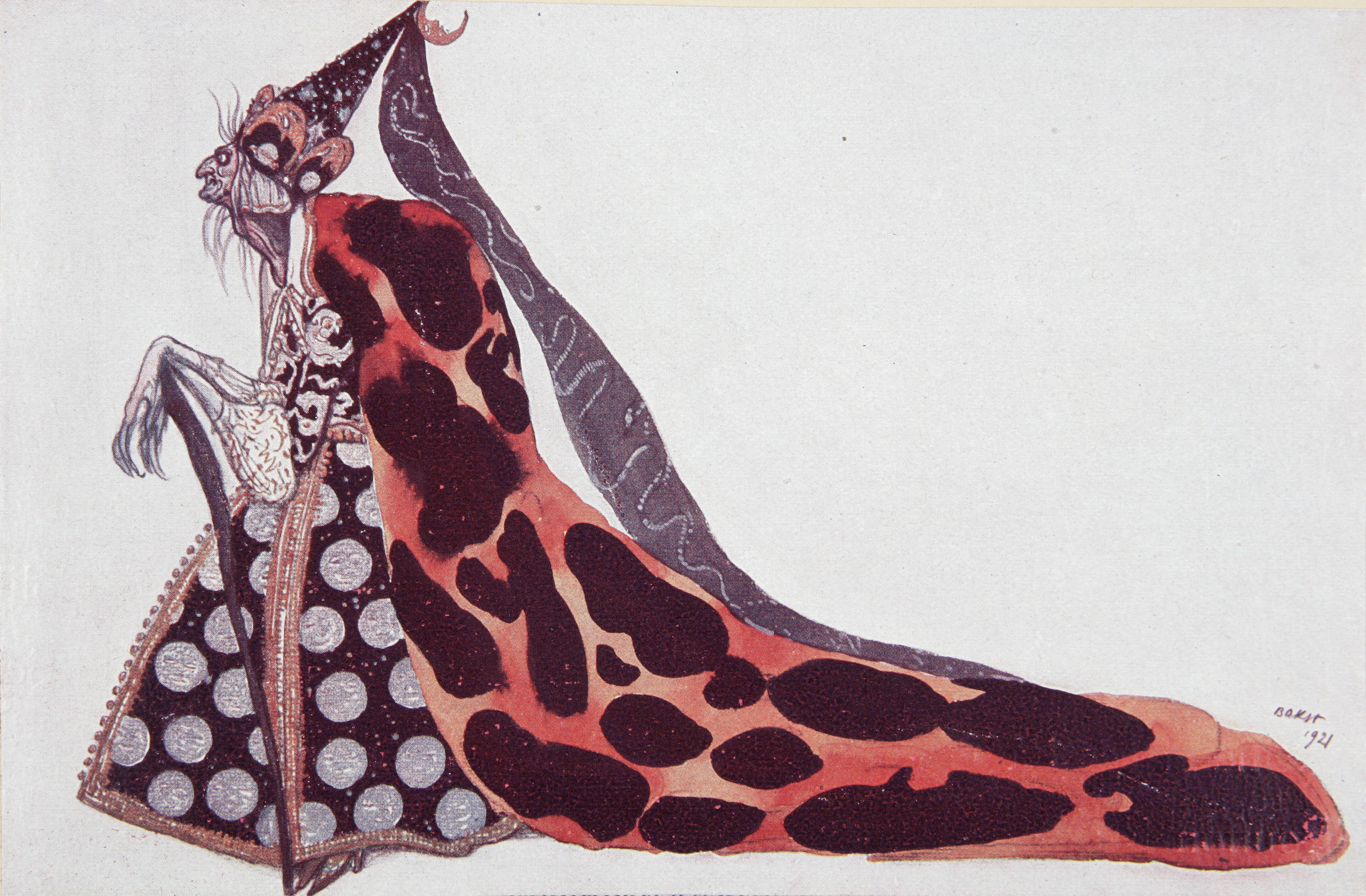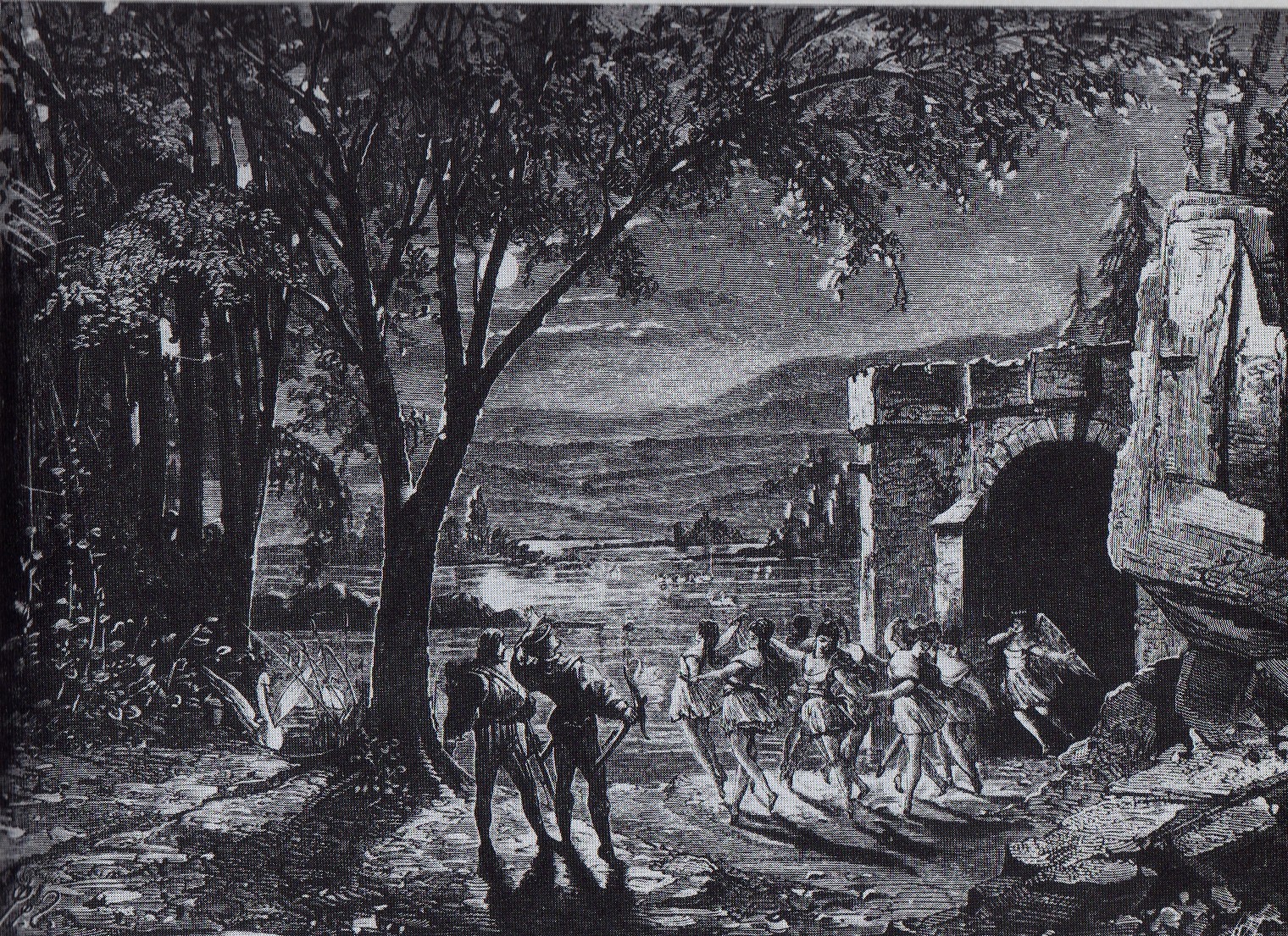|
The Pharaoh's Daughter
''The Pharaoh's Daughter'' (russian: Дочь фараона, french: La Fille du pharaon), is a ballet choreographed by Marius Petipa to music by Cesare Pugni. The libretto was a collaboration between Jules-Henri Vernoy de Saint-Georges and Petipa from Théophile Gautier's ''Le Roman de la momie''. It was first presented by the Imperial Ballet at the Imperial Bolshoi Kamenny Theatre, in St. Petersburg, Russia, on 18 January (30 January) 1862, with the design by A. Roller, G. Wagner (scenery), Kelwer and Stolyakov (costumes). The principal dancers at the opening night were Carolina Rosati (Mummy/Aspicia), Nicholas Goltz (Pharaoh), Marius Petipa (Ta-Hor), Timofey Stoukolkin as John Bull, Lubov Radina (Ramzaya), Felix Kschessinskiy (King of Nubia), and Lev Ivanov (Fisherman). For Petipa it was the last role: he has finished his career as a dancer; he became ballet master. The Sergeyev Collection, which is part of the Harvard University Theatre Collection, contains choreogr ... [...More Info...] [...Related Items...] OR: [Wikipedia] [Google] [Baidu] |
Ballet
Ballet () is a type of performance dance that originated during the Italian Renaissance in the fifteenth century and later developed into a concert dance form in France and Russia. It has since become a widespread and highly technical form of dance with its own vocabulary. Ballet has been influential globally and has defined the foundational techniques which are used in many other dance genres and cultures. Various schools around the world have incorporated their own cultures. As a result, ballet has evolved in distinct ways. A ''ballet'' as a unified work comprises the choreography and music for a ballet production. Ballets are choreographed and performed by trained ballet dancers. Traditional classical ballets are usually performed with classical music accompaniment and use elaborate costumes and staging, whereas modern ballets are often performed in simple costumes and without elaborate sets or scenery. Etymology Ballet is a French word which had its origin in Italian ... [...More Info...] [...Related Items...] OR: [Wikipedia] [Google] [Baidu] |
John Bull
John Bull is a national personification of the United Kingdom in general and England in particular, especially in political cartoons and similar graphic works. He is usually depicted as a stout, middle-aged, country-dwelling, jolly and matter-of-fact man. He originated in satirical works of the early 18th century and would come to stand for " English liberty" in opposition to revolutionaries. He was popular through the 18th and 19th centuries until the time of the First World War, when he generally stopped being seen as representative of the "common man". Origin John Bull originated as a satirical character created by John Arbuthnot, a friend of Jonathan Swift and Alexander Pope. Bull first appeared in 1712 in Arbuthnot's pamphlet ''Law is a Bottomless Pit''."AngloMania: Tradition and Transgression in British Fashion," Metropolitan Museum of Art (2006), exhibition brochure, p. 2. The same year Arbuthnot published a four-part political narrative ''The History of John Bull''. In ... [...More Info...] [...Related Items...] OR: [Wikipedia] [Google] [Baidu] |
The Sleeping Beauty (ballet)
''The Sleeping Beauty'' ( rus, Спящая красавица, Spyashchaya krasavitsa ) is a ballet in a prologue and three acts, first performed in 1890. The music was composed by Pyotr Ilyich Tchaikovsky (Opus 66). The score was completed in 1889, and is the second of his three ballets. The original scenario was conceived by Ivan Vsevolozhsky, and is based on Charles Perrault's '' La Belle au bois dormant''. The choreographer of the original production was Marius Petipa. The premiere performance took place at the Mariinsky Theatre in St. Petersburg on January 15, 1890. The work has become one of the classical repertoire's most famous ballets. History Tchaikovsky was approached by the Director of the Imperial Theatres in St. Petersburg, Ivan Vsevolozhsky on 25 May 1888 about a possible ballet adaptation on the subject of the story of ''Undine''. It was later decided that Charles Perrault's '' La Belle au bois dormant'' would be the story for which Tchaikovsky would co ... [...More Info...] [...Related Items...] OR: [Wikipedia] [Google] [Baidu] |
La Bayadère
''La Bayadère'' ("the temple dancer") ( ru. «Баядерка», ''Bayaderka'') is a ballet, originally staged in four acts and seven tableaux by French choreographer Marius Petipa to the music of Ludwig Minkus. The ballet was staged especially for the benefit performance of the Russian ''Prima ballerina'' Ekaterina Vazem, who created the principal role of Nikiya. ''La Bayadère'' was first presented by the Imperial Ballet at the Imperial Bolshoi Kamenny Theatre in St. Petersburg, Russia, on . From the first performance the ballet was universally hailed by contemporary critics as one of the choreographer Petipa's supreme masterpieces, particularly the scene from the ballet known as ''The Kingdom of the Shades'', which became one of the most celebrated pieces in all of classical ballet. By the turn of the 20th century, ''The Kingdom of the Shades'' scene was regularly extracted from the full-length work as an independent showpiece, and it has remained so to the present day. Nea ... [...More Info...] [...Related Items...] OR: [Wikipedia] [Google] [Baidu] |
Swan Lake
''Swan Lake'' ( rus, Лебеди́ное о́зеро, r=Lebedínoye ózero, p=lʲɪbʲɪˈdʲinəjə ˈozʲɪrə, link=no ), Op. 20, is a ballet composed by Russian composer Pyotr Ilyich Tchaikovsky in 1875–76. Despite its initial failure, it is now one of the most popular ballets of all time. The scenario, initially in two acts, was fashioned from Russian and German folk tales and tells the story of Odette, a princess turned into a swan by an evil sorcerer's curse. The choreographer of the original production was Julius Reisinger (Václav Reisinger). The ballet was premiered by the Bolshoi Ballet on at the Bolshoi Theatre in Moscow. Although it is presented in many different versions, most ballet companies base their stagings both choreographically and musically on the 1895 revival of Marius Petipa and Lev Ivanov, first staged for the Imperial Ballet on 15 January 1895, at the Mariinsky Theatre in St. Petersburg. For this revival, Tchaikovsky's score was revised by ... [...More Info...] [...Related Items...] OR: [Wikipedia] [Google] [Baidu] |
Divertissement
''Divertissement'' (from the French 'diversion' or 'amusement') is used, in a similar sense to the Italian 'divertimento', for a light piece of music for a small group of players, however the French term has additional meanings. During the 17th and 18th century, the term implied incidental aspects of an entertainment (usually involving singing and dancing) that might be inserted in an opera or ballet or other stage performance. In the operas produced by the Académie Royale de Musique, both tragédies lyriques and comédies lyriques, these 'divertissements' were sometimes linked to the main plot, or performed at the close of the performance. (Similar examples during the 19th century include Charles Gounod's opera ''Faust'' and Delibes's ballet ''Coppélia''.) Special entertainments of a similar kind given ''between'' the acts of an opera were called 'intermèdes'. The term is also sometimes used for a ballet suite of loosely connected dances. One 20th-century example is Jacques ... [...More Info...] [...Related Items...] OR: [Wikipedia] [Google] [Baidu] |
Mathilde Kschessinska 1903
Mathilde is an alternative spelling of the names Matilde or Matilda, and could refer to: *Mathilde Dolgopol de Sáez (1901 –1957), Argentinian vertebrate paleontologist * Mathilde, Abbess of Essen (949–1011) * Mathilde Alanic (1864-1948), French novelist, short story writer * Mathilde Bonaparte (1820-1904), French princess and salonnière * Matilde Camus (1919–2012), Spanish poet * Mathilde Esch (1815–1904), Austrian genre painter * Mathilde Hupin (born 1984), Canadian orthopaedic surgeon and cyclist * Mathilde Kschessinska (1872–1971), ballet dancer * Mathilde Wildauer (1820–1878), actress and opera singer * Queen Mathilde of Belgium (born 1973) * Elsie and Mathilde Wolff Van Sandau (''alive in'' 1914), British suffragette sisters * 253 Mathilde, an asteroid * ''Mathilde'' (film), a 2004 film * "Mathilde" (song), by Jacques Brel, 1964 * ''Matilde di Shabran'', an opera by Gioachino Rossini * ''Schipper naast Mathilde Schipper naast Mathilde ('' Skipper next to Ma ... [...More Info...] [...Related Items...] OR: [Wikipedia] [Google] [Baidu] |
Arthur Saint-Léon
Arthur Saint-Léon (17 September 1821, in Paris – 2 September 1870) was the '' Maître de Ballet'' of St. Petersburg Imperial Ballet from 1859 until 1869 and is famous for creating the choreography of the ballet ''Coppélia''. Biography He was born Charles Victor Arthur Michel in Paris, but was raised in Stuttgart, where his father was dance master for the court and the theatre ballet. Saint-Léon was encouraged by his father, who had also been a dancer of the Paris Opéra Ballet, to study music and dance. Saint-Léon studied violin with Joseph Mayseder and Niccolò Paganini. At the same time, he studied ballet so he could perform both as violinist and dancer. When he was 17 years old, he made his début as first demi-charactére dancer at the Théâtre de la Monnaie in Brussels. He started to tour across Europe dancing in Germany, Italy, England, obtaining a lot of success. In particular, the London audience, who did not like at that time to see men dancing on stage, liked h ... [...More Info...] [...Related Items...] OR: [Wikipedia] [Google] [Baidu] |
Nile
The Nile, , Bohairic , lg, Kiira , Nobiin language, Nobiin: Áman Dawū is a major north-flowing river in northeastern Africa. It flows into the Mediterranean Sea. The Nile is the longest river in Africa and has historically been considered the List of rivers by length, longest river in the world, though this has been contested by research suggesting that the Amazon River is slightly longer.Amazon Longer Than Nile River, Scientists Say Of the world's major rivers, the Nile is one of the smallest, as measured by annual flow in cubic metres of water. About long, its drainage basin covers eleven countries: the Democratic Republic of the Congo, Tanzania, Burundi, Rwanda, Uganda, Kenya, Ethiopia, Erit ... [...More Info...] [...Related Items...] OR: [Wikipedia] [Google] [Baidu] |
Opium
Opium (or poppy tears, scientific name: ''Lachryma papaveris'') is dried latex obtained from the seed capsules of the opium poppy ''Papaver somniferum''. Approximately 12 percent of opium is made up of the analgesic alkaloid morphine, which is processed chemically to produce heroin and other synthetic opioids for medicinal use and for the illegal drug trade. The latex also contains the closely related opiates codeine and thebaine, and non-analgesic alkaloids such as papaverine and noscapine. The traditional, labor-intensive method of obtaining the latex is to scratch ("score") the immature seed pods (fruits) by hand; the latex leaks out and dries to a sticky yellowish residue that is later scraped off and dehydrated. The word '' meconium'' (derived from the Greek for "opium-like", but now used to refer to newborn stools) historically referred to related, weaker preparations made from other parts of the opium poppy or different species of poppies. The production methods have ... [...More Info...] [...Related Items...] OR: [Wikipedia] [Google] [Baidu] |
Pharaoh
Pharaoh (, ; Egyptian: ''pr ꜥꜣ''; cop, , Pǝrro; Biblical Hebrew: ''Parʿō'') is the vernacular term often used by modern authors for the kings of ancient Egypt who ruled as monarchs from the First Dynasty (c. 3150 BC) until the annexation of Egypt by the Roman Empire in 30 BC. However, regardless of gender, "king" was the term used most frequently by the ancient Egyptians for their monarchs through the middle of the Eighteenth Dynasty during the New Kingdom. The term "pharaoh" was not used contemporaneously for a ruler until a possible reference to Merneptah, c. 1210 BC during the Nineteenth Dynasty, nor consistently used until the decline and instability that began with the Twenty-Fifth Dynasty. In the early dynasties, ancient Egyptian kings had as many as three titles: the Horus, the Sedge and Bee ( ''nswt-bjtj''), and the Two Ladies or Nebty ( ''nbtj'') name. The Golden Horus and the nomen and prenomen titles were added later. In Egyptian society, religio ... [...More Info...] [...Related Items...] OR: [Wikipedia] [Google] [Baidu] |







